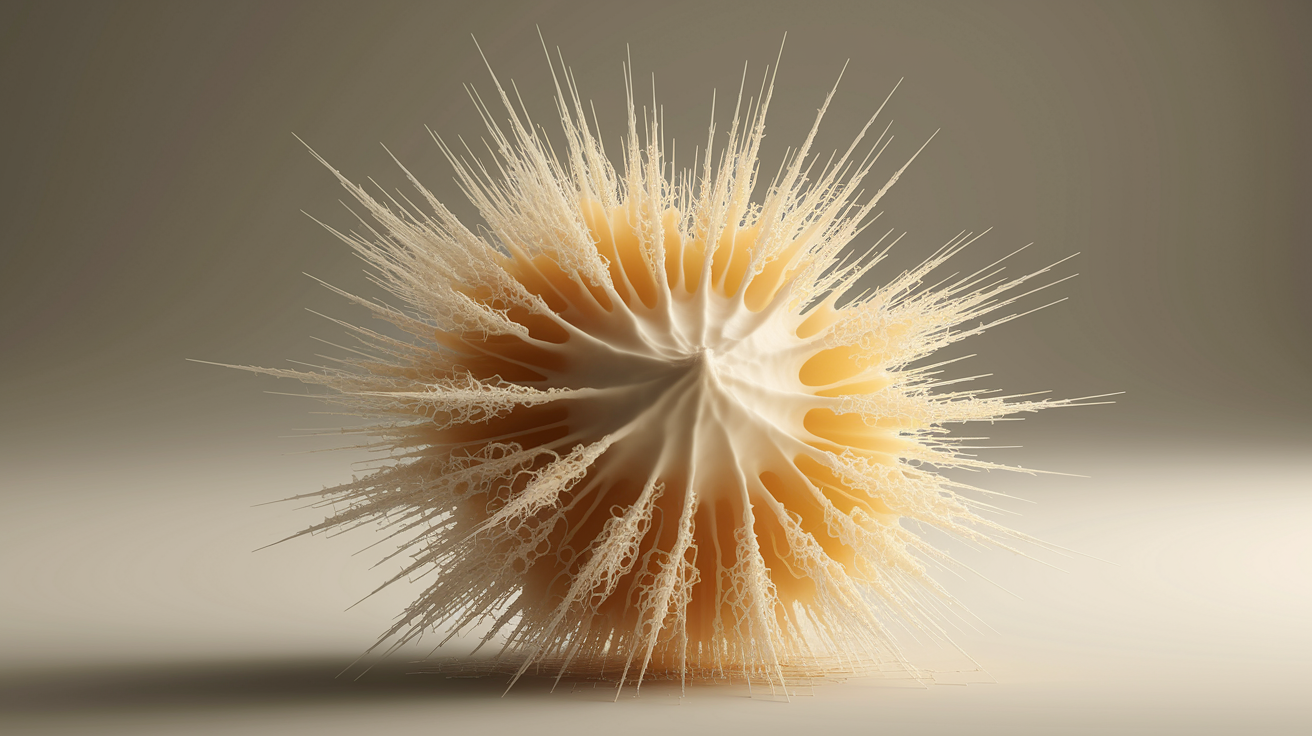Quick Answer: Popcorn kernels pop when the water inside them turns to steam under heat, building pressure until the hard outer shell ruptures and the starchy interior expands rapidly into fluffy popcorn. This fascinating process combines physics and chemistry in a delicious demonstration of pressure, temperature, and molecular transformation.
Pop Goes the Kernel: Why Popcorn Pops in a Nutshell
Have you ever wondered what causes that satisfying “pop” when you’re making popcorn? It’s actually a remarkable example of science in action! The popcorn popping mechanism is essentially a tiny pressure cooker scenario happening inside each kernel.

Here’s the basic science of popcorn in simple terms:
- Each kernel contains about 14% water trapped inside
- Heat turns this water into steam
- Steam creates pressure inside the hard shell
- The shell eventually can’t contain the pressure and ruptures
- The starchy interior explodes outward, creating fluffy popcorn
What makes this process so fascinating is how it demonstrates key principles of physics and chemistry working together. The transformation from a small, hard kernel to a fluffy piece of popcorn involves phase changes, pressure dynamics, and molecular structure – all happening in seconds!
Inside the Kernel: Moisture and the Pericarp
To understand how popcorn pops, we need to examine the kernel’s anatomy. Every popcorn kernel is like a tiny, natural pressure vessel with two critical components working together.
The Water Inside
The role of moisture in popcorn popping cannot be overstated. Popcorn kernels contain approximately 14% moisture content, which is the perfect amount for the popping process. This water is distributed throughout the starchy endosperm inside the kernel.
Why is this moisture content so important? Too little water, and there won’t be enough steam pressure to cause the pop. Too much water, and the kernel might split prematurely before building sufficient pressure. It’s like having just the right amount of fuel for an explosion!

The way starchy grains absorb water helps explain how this moisture gets distributed evenly throughout the kernel’s interior, setting the stage for uniform heating and pressure buildup.
The Pericarp: Nature’s Pressure Cooker
The pericarp is the scientific name for the hard outer shell of the popcorn kernel. Think of it as nature’s own pressure cooker lid! This tough hull serves a crucial function in the popping process by containing the expanding steam and building pressure.
The importance of pericarp integrity determines whether a kernel will successfully pop or remain stubbornly unpopped. The shell needs to be:
- Strong enough to contain pressure buildup
- Flexible enough to eventually rupture cleanly
- Uniform in thickness for even pressure distribution
Heating Up: From Water to Steam
Now comes the exciting part – what happens when we apply heat! The transformation from water to steam is where the magic of popcorn physics really begins.
The Critical Temperature
Popcorn kernels typically begin popping when they reach around 180°C (356°F). At this temperature, something remarkable happens inside each kernel. The internal pressure reaches a critical point where the physics of the situation dramatically changes.
Here’s what’s happening step by step:
- Initial heating: The kernel absorbs heat energy
- Water heating: Internal moisture begins to warm up
- Phase change: Water molecules start converting to steam
- Pressure buildup: Steam takes up much more space than liquid water
- Critical pressure: Internal pressure reaches breaking point
The Power of Steam
Understanding what makes water so special helps explain why steam is so effective at creating pressure. When water changes from liquid to gas, it expands dramatically – about 1,600 times its original volume!

This expansion creates tremendous internal pressure popcorn that pushes against the kernel’s starchy interior and hard shell. The interplay between heat, moisture, and pressure creates the perfect conditions for the explosive transformation we know as popping.
For those who prefer using a microwave, the process works similarly but with a different heating mechanism. How microwaves heat food by targeting water molecules directly makes them an efficient way to create the steam pressure needed for popping.
The Pop!: Rupture and Starch Expansion
The moment we’ve all been waiting for – the actual pop! This is where chemistry and physics create a spectacular transformation that’s both audible and visible.
The Great Rupture
When the internal pressure becomes too much for the pericarp to contain, the hull ruptures suddenly and dramatically. This steam build-up and pressure release happens almost instantaneously, creating that characteristic “pop” sound we all recognize.
The rupture isn’t random – it typically occurs at the weakest point of the shell, often creating a distinctive pattern. Scientists have observed that starch ‘legs’ emerge from the broken hull, giving popped corn its unique shape.

Rapid Expansion and Gelatinization
Once the shell breaks, the real magic happens! The starchy interior undergoes rapid gelatinization – a process where starch granules swell and burst when exposed to heat and moisture. This transformation from kernel to fluffy popcorn occurs in milliseconds.
Here’s what’s happening during expansion:
- Steam escape: Pressurized steam rushes out of the kernel
- Starch expansion: Hot, gelatinized starch expands rapidly
- Cooling and solidifying: The expanded starch quickly cools and hardens
- Final form: We get the familiar fluffy, airy texture of popcorn
The rapid expansion and cooling process is what gives popcorn its characteristic light, crunchy texture. The interior becomes filled with tiny air pockets, making each piece much larger but much lighter than the original kernel.
Keys to Perfect Pops: What Affects Popping Efficiency
Not all kernels pop perfectly, and understanding why can help you achieve better results and satisfy your curiosity about the science involved!
Moisture Content: The Goldilocks Zone
The ideal moisture level for popcorn popping is around 14%. This isn’t arbitrary – it’s the perfect balance for creating optimal pressure. Here’s why moisture content affects popping:

- Too little moisture (below 12%): Not enough steam pressure builds up
- Too much moisture (above 16%): Shell may crack prematurely before pressure peaks
- Just right (13-15%): Perfect pressure buildup and explosive expansion
Shell Integrity and Kernel Quality
Why do some popcorn kernels not pop even when heated properly? The answer often lies in the pericarp’s condition:
- Cracked shells: Allow steam to escape before pressure builds
- Too-thick shells: May be too strong to rupture at normal temperatures
- Uneven shells: Create weak spots that rupture prematurely
- Old kernels: May have lost moisture over time
Temperature and Heating Method
The popping temperature and heating method significantly impact success rates:
- Even heating: Ensures uniform pressure buildup across all kernels
- Proper temperature: Too low won’t create enough pressure, too high may burn kernels
- Heat distribution: Uneven heating leads to some kernels popping while others don’t
The Final Kernel: Wrapping Up Our Popcorn Journey
The science behind exploding kernels is a perfect example of how everyday phenomena involve fascinating physics and chemistry. From the initial moisture content to the final fluffy result, every step demonstrates scientific principles in action.
Key takeaways from our popcorn exploration:
- Popcorn popping is essentially a pressure vessel explosion on a tiny scale
- The perfect moisture content (around 14%) is crucial for successful popping
- The pericarp acts as nature’s pressure cooker, containing steam until rupture
- Temperature around 180°C triggers the critical pressure needed for popping
- Rapid starch expansion and cooling creates the familiar fluffy texture
Next time you enjoy a bowl of popcorn, you’ll appreciate the remarkable scientific process that transformed those small, hard kernels into delicious, fluffy snacks. It’s a delicious demonstration of how understanding the physics of popcorn popping can make even simple pleasures more fascinating!













